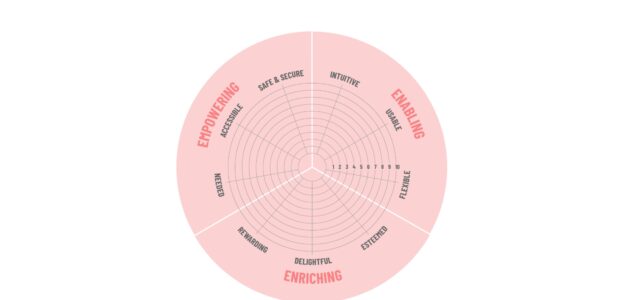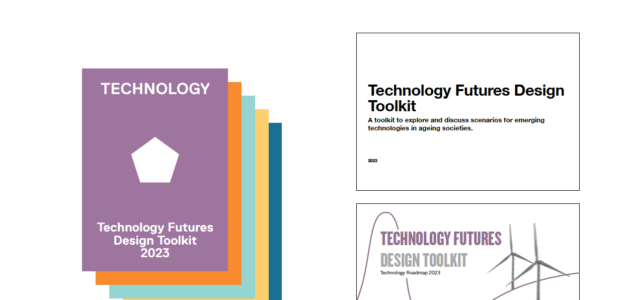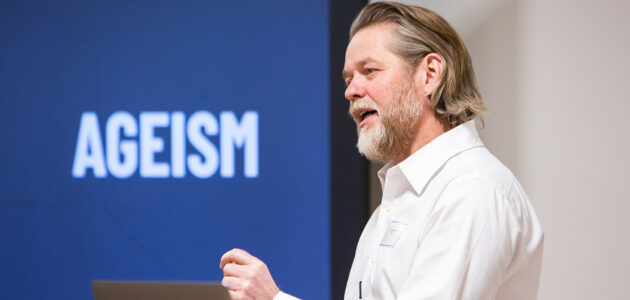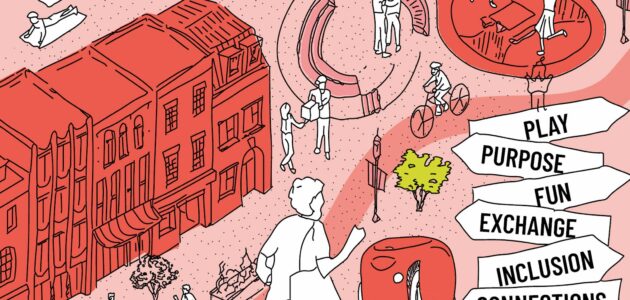Understand how to design better
Whether you are a designer, an individual user or a client developing new products, services, or environments for an ageing population, our unique tools can help you to better understand the ways better design can help all of us to navigate life’s transitions and age happier and healthier.
You can read more about the tools and the role of design in helping us all to age with agency and joy in Design Age Ideas, an interactive report bringing together research, insights and tools from Design Age Institute.
Get in touch with us below to find out more and book a workshop to learn about our tools and how they may be most useful for you:
Tools & Models
Explore and download our unique tools and models for creating, testing and evaluating better design for our future selves.

Age-Inclusive Design Evaluation tool
The Age-Inclusive Design Evaluation tool is used to evaluate the design of a product, service or environment to better understand how useful, useable and desirable it is for older people. The tool focuses on a 3-E approach, defined as:
Empowering: “To make (someone) stronger and more confident, especially in controlling their life and claiming their rights, by designing things that are useful.”
Enabling: “To give (someone) the ability or means to do something; by designing things that are usable.”
Enriching: “To engage (someone’s) senses and enhance the quality or their lives by designing things that are desirable.”
The Age Inclusive Design Evaluation tool is explored in Design Age Ideas, with details on how to use the tool below!
| Download the tool | You can download a PDF copy of the Age-Inclusive Design Evaluation tool here. |
| How to use this tool | Take time to review a design in terms of each of the nine elements of the Age-Inclusive Design Evaluation tool:
Empowering
Enabling
Enriching
Weighting: Depending on the nature of the product, service, or environment, the weighting of each of these nine elements may not be equal. It is important to consider how each element impacts or is impacted by the stakeholders and the specific context in order to assess each appropriately. |
| Why use this tool | The purpose of the Age-Inclusive Design Evaluation tool is to help users, designers, and clients thoughtfully evaluate existing and future products, services, and environments to ensure design meets or has met people’s needs and wants and desires. While the importance of each element may change based on the particular use of a design, Design Age Institute believes the 3-E approach can help us design better for a more equitable, inclusive society. |
| When to use this tool | This tool works best when used early and often: to set the brief, inform the process, evaluate competition and support user testing. |
| Where to use this tool | The Age-Inclusive Design Evaluation tool can be used across all design scales and contexts. |
| Evidence and further reading |
|

The Hamlyn Cloverleaf
The Hamlyn Cloverleaf is a tool that can help designers and individuals to reflect on life’s transitions.
The tool, developed by Design Age Institute and named in honour of Lady Helen Hamlyn, aims to move away from thinking about ageing as purely chronological, instead focusing on the Mental, Physical, Social, and Economic transitions that take place throughout our lives and which may impact our wellbeing, health and independence as we age.
The Hamlyn Cloverleaf is explored in Design Age Ideas, with details on how to use the tool below!
| Download the tool | You can download a PDF copy of the Hamlyn Cloverleaf tool here. |
| How to use this tool | Take time to reflect on each of the four cloverleaf aspects: Mental, Physical, Social and Economic.
(5 star = feeling best – 1 star = feeling worst) For individual users:
For designers:
|
| Why use this tool | Giving people time to reflect on how they feel about these four wellbeing aspects currently and how they may feel in the future, will help raise their awareness about their needs and wants. This is a good basis for reflecting on our decisions, in particular our design decisions, and how those decisions may impact our wellbeing. |
| When to use this tool | For individual users:
For individual users, we recommend using the Hamlyn Cloverleaf tool to support planning for your future self.
For designers: For designers, we recommend using the Hamlyn Cloverleaf tool in the brief-setting stage of a design project (the discovery phase of the double diamond approach or for built environment scale projects during stage 0 of the RIBA Stages of work):
|
| Where to use this tool | Reflecting on the four cloverleaf considerations may raise sensitive and personal thoughts. We recommend reflecting on the cloverleaf aspects only where you feel safe and willing to do so. |
| Evidence and further reading | |






